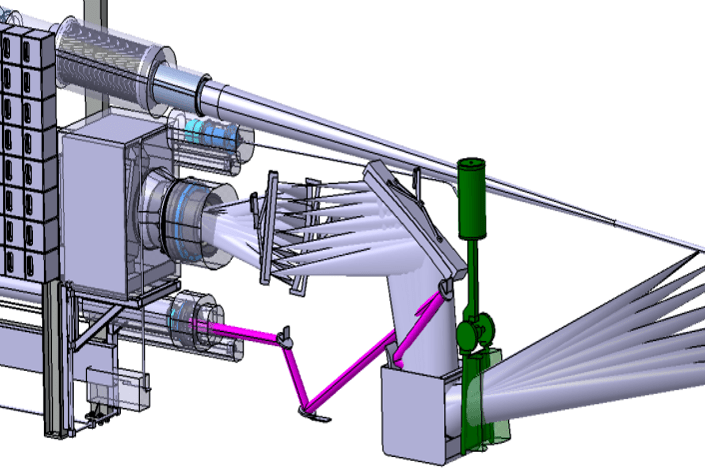How will we monitor the temperature of ITER plasma?

Illustration of the laser injected by the Core Plasma Thomson Scattering system into the vacuum vessel, reaching the beam dump (small blue box). The scattered light is collected by the system for further analysis.
Inside the ITER Vacuum Vessel, the plasma will reach 150 million °C to produce the fusion reaction. Such high temperature is necessary for the deuterium and tritium to fuse and release energy. But how can we monitor temperature in such harsh environment? Several diagnostic systems will measure different parameters to control the experiment. The Core Plasma Thomson Scattering (CPTS) system will be the “thermometer” of the ITER plasma.
F4E has signed a contract with IDOM to develop this system. The CPTS will send laser light into the vacuum vessel, and the electrons in the plasma will scatter it. By collecting and analysing the scattered light, the system will provide real-time measures of the electron density and temperature of the fusion reaction. The contract will run for 31 months, during which the contractor will develop a preliminary design of the CPTS and some prototypes of the most challenging components. The total cost of the activities is in the range of 7.2 M EUR.

The CPTS will be deployed from inside the vacuum vessel to the diagnostic building. “Designing this system requires having a wide experience in various disciplines such as vacuum technologies, nuclear safety, complex mechanical components and integration, high power lasers, etc. Therefore, it is also a challenge to be involved in such a multi-disciplinary contract,” explains Laura Sánchez, F4E Technical Project Officer of this contract.
Maitane Amarika Aranberri, IDOM Project Officer of the CPTS project, explains their expertise to tackle this task. “IDOM brings on this project expertise in the design of complex optical/mechatronic systems in different environments such as the Jules Horowitz Reactor (JHR), ITER and high altitude/remote astronomical observatories like the Extremely Large Telescope (ELT). IDOM is supported in this effort by the Ioffe Institute, Kampf Telescope Optics and the UK Atomic Energy Authority”.